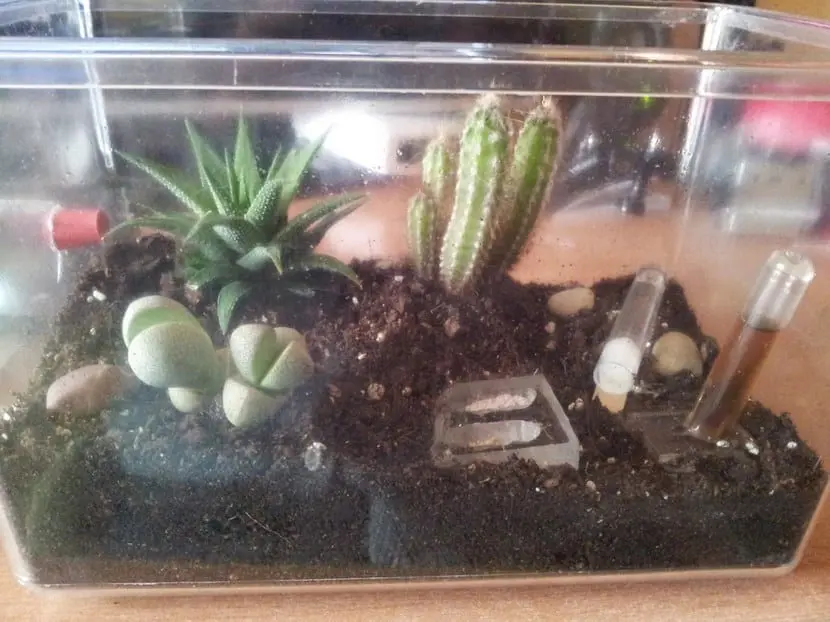An empty fish tank can become a sad and desolate image, but not if it is full of water and with fish swimming inside. Or if we fill it with earth and plants and cacti rest on it.
Did you know that you can do wonders with fish tanks? They can be the ideal home for some plants to grow happily and in perfect condition.
Benefits of growing plants in fish tanks
Fish tanks have the virtue of being ideal spaces for delicate plants , especially if they are curved fish tanks because then they can better conserve humidity and at the same time air currents are avoided, thus creating a microclimate that favors the development of some species.
This microclimate also requires less work for those people who do not have much time to dedicate to their plants, since by not being exposed to the outside, the margin of risk is reduced and therefore also the necessary care for the plants to survive in optimal conditions.

The ideal is to grow small plants in fish tanks , which adapt well to humid climates and do not need too much light. Examples are the fern, the begonias, the orchids or the tradescantias and African violets.
How to assemble the fish tank
Clean the fish tank with white soap and water and then clean very well so that there are no soap residues.
The first thing to do is place a mixture of gravel and stones at the base of the fish tank to facilitate drainage. Then place a layer of moss, responsible for absorbing moisture, and finally pour the earth, a soil that must offer good drainage. In total, do not exceed two thirds of the total height of the container.

Depending on the size of the plants as they grow, the amount you should plant. Keep in mind that the more plants, the more humidity in the microclimate of the fish tank.
Locate the fish tank in a well-lit place but avoiding direct sunlight.
